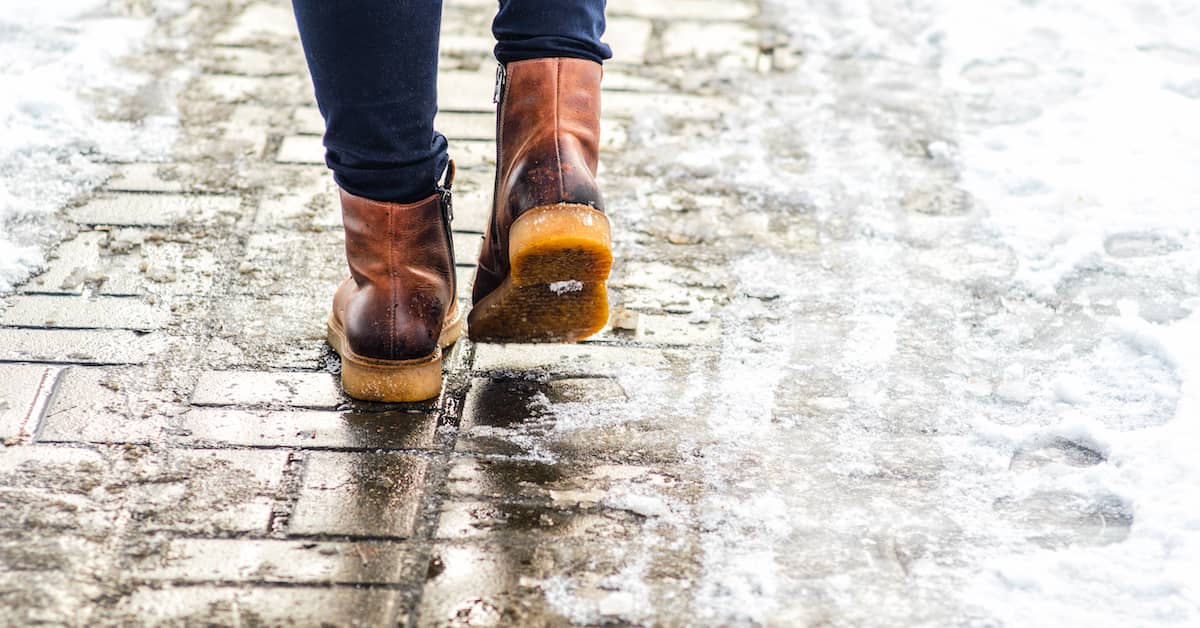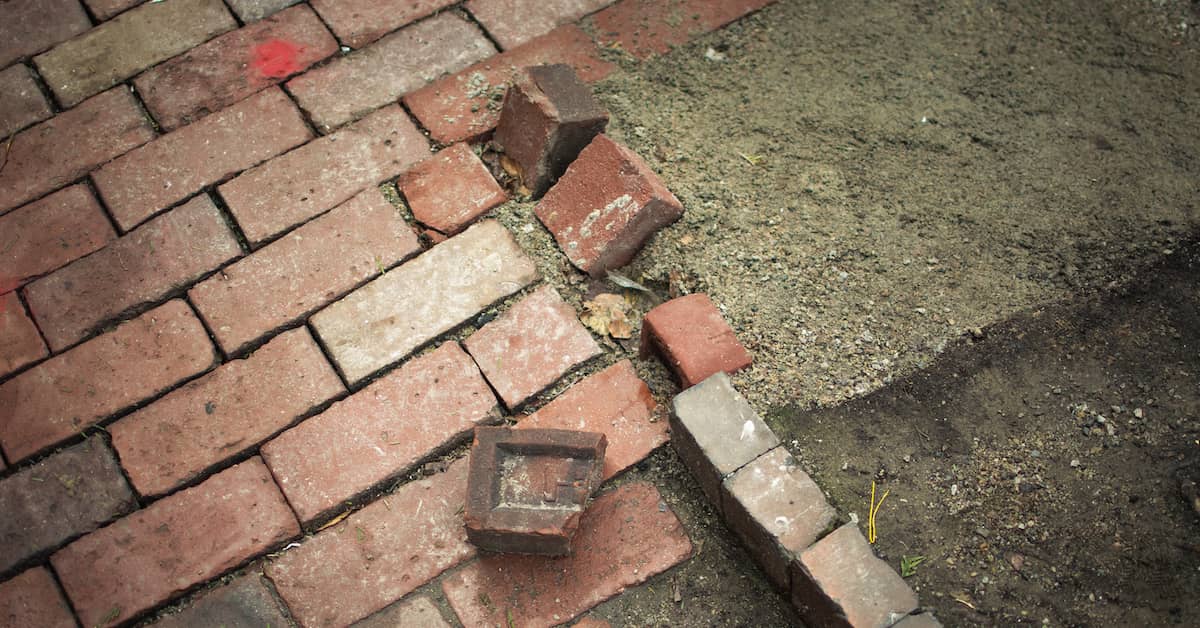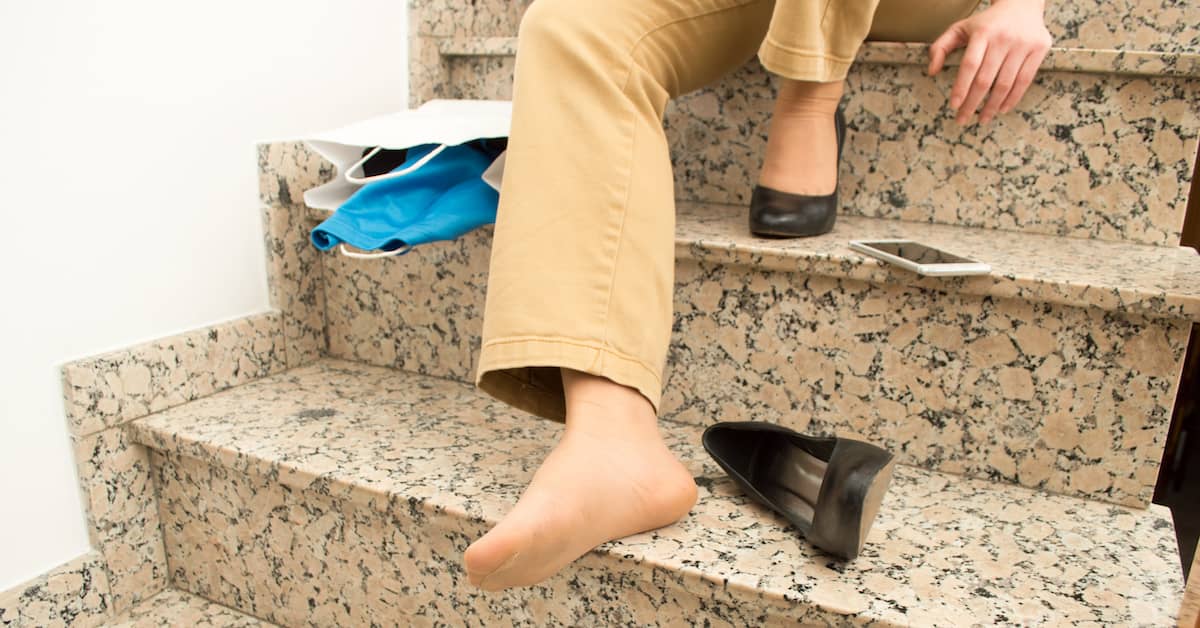
Every year, as the season shifts from fall to winter, the number of Canadians who experience trip and fall injuries skyrockets. The longest of Canada’s four seasons, winter presents a host of threats that could land you or a loved one in the hospital with a fall-related injury. Those injuries range in severity from sprains and bruises to broken bones and traumatic brain injuries. One wintertime trip and fall could have serious, life-altering consequences. Icy conditions, along with thawing and refreezing cycles, make Canadian paths and sidewalks perilous. In this blog, we will provide you with helpful tips to keep you and your family safe this winter.
Common Wintertime Trip and Fall Injuries
Trip and fall injuries vary greatly in nature and severity. Some may last days, while others may require ongoing treatment and therapy to resolve. Common injuries that occur as a result of a trip and fall can include:
- Bruises
- Abrasions
- Sprains and strains
- Broken or fractured bones, including hip and skull fractures
- Cracked ribs
- Back injuries
- Brain injuries
- Neck injuries
- Wrist injuries
- Traumatic spinal cord injuries
These injuries may require simple care at home like icing or heat, or they may require more extensive medical treatment like surgery or physical therapy.
Why Is Winter So Dangerous?
While snow and ice are major causes of falls during this dangerous season, there are other perils that may not be quite so obvious. Some of the factors that contribute to so many wintertime trip and falls for Canadians include:
- Hypothermia: Cold temperatures can cause hypothermia, which poses a serious threat to people of all ages. Symptoms of hypothermia can include numbness in extremities, confusion, dizziness, and irregular heartbeat, all of which may cause someone to trip and fall.
- Decreased vitamin D levels: In winter, the number of sunlight hours can serve to lower critical vitamin D levels. Vitamin D serves to increase muscle and bone strength. With decreased levels of vitamin D, people may struggle to combat the tougher walking conditions that winter often presents, increasing the risk of trip and falls.
- Bringing the outdoors inside: In the winter, we often track ice and snow inside. This can lead to an increased risk of slips and falls when the ice on the bottom of a shoe meets a smooth surface or when leftover ice melts.
- Reduced light levels: As the days become shorter, light levels also decrease significantly. This can make it much more difficult to spot a patch of ice or an area of uneven ground, thereby increasing the likelihood of a trip and fall.
- Alcohol consumption: Winter also means holidays as well as holiday parties and celebrations. Oftentimes parties include alcohol. Too much alcohol consumption can lead to decreased motor skills, balance impairment, vision problems, and decreased judgment. This combination can have catastrophic consequences and contribute to many trip and fall injuries.
- Medication use: For some Canadians, winter may also bring with it seasonal depression, requiring treatment with medication. Some antidepressants may cause side effects like impaired balance or slower reaction times, which can lead to a trip and fall. Make sure you carefully review any new medications and their side effects with your doctor before you start taking them.
Tips for Staying Safe in the Winter
Even though winter does carry a host of inherent risks, there are proactive steps you can take to try and avoid trip and fall injuries during this season.
- Follow the rules: Be sure to only walk on designated paths and walkways. Fight the urge to take shortcuts or save time by blazing your own trail. Try to walk only on cleared paths. Respect signage indicating that a walkway is closed or hazardous. Always use handrails wherever they are available. If you see any unmarked slippery areas, report them immediately. This can help prevent someone else from experiencing a life-altering trip and fall injury.
- Focus on what you are doing: When you are walking outside in the winter, you should be focused and aware of your surroundings. Never text or talk on the phone while you are walking. Be present, and pay attention to the walkways, ensuring you keep an eye out for hard-to-see dangers like black ice, hidden debris, wet leaves, steam vents, potholes, and uneven pathways. Surfaces may appear dry but may actually be covered in ice or water, making them extremely slippery. Carefully test areas that appear questionable or concerning by tapping one of your feet on it first. If it is slick, avoid it. If you cannot avoid it, try the penguin shuffle by pointing your feet outward and taking short steps by shuffling your feet slowly.
- Plan ahead: Allow yourself extra time to get where you are going. Snow and ice will inevitably slow us down, so account for that. Avoid running and rushing at all costs. Walk slowly and intentionally and use the utmost care. Step carefully into and out of vehicles.
- Be aware of the weather: Make sure to check the weather before you leave for your destination. Canadian winters are infamous for weather conditions that change quickly and drastically. Ensure you are aware of any imminent winter storms or below-freezing temperatures.
- Dress appropriately: When temperatures begin to drop, make sure you are wearing clothing and accessories that help you stay warm, like parkas, gloves, scarves, and hats. When your body temperature falls below a certain level, you increase your chances of developing hypothermia and frostbite. These conditions can limit your ability to use your extremities for balance and can even impair your cognitive abilities and impact your balance. In addition, wearing clothing that keeps you warm will also discourage you from rushing to get to your destination.
- Keep your hands out of your pockets: If you have dressed appropriately, then you should be able to keep your hands and arms available for balance. Your arms and hands can help you maintain balance if you start to slip or trip on an object, and they can help you brace for impact if needed.
- Wear appropriate footwear: Pick shoes with good traction, slip resistance, and sturdy soles for walking outside in the winter. Avoid shoes like high heels, flip flops, and footwear that lack substantial traction. Being able to get a good grip on the surfaces upon which you will walk is the best way to prevent a winter trip and fall injury.
- Use a backpack: If you need to carry something, make use of a backpack. This keeps the extra weight closer to your center of gravity. Using your arms to carry heavy items will disrupt your balance and prevent you from being able to use them if you should trip or slip.
- Try a walking aid: Traction and balance are critical when maneuvering on snow and ice. Try utilizing a walking stick, ice grippers, snow cleats, a cane, or ski poles to increase your balance. Make sure you select an aid that is the right height and size for you, that is in good working condition, and that you understand how to use it properly. Any tool that helps you gain more traction can be vital in the winter. Make sure you remove any walking aids on your shoes before you go indoors, however. Added traction in the snow may become a danger when you step foot on an inside surface like tile or hardwood floors.
- Remove snow and ice from your shoes before going indoors: Caked-on snow and ice can be very slippery. Before you walk inside, knock off the ice and snow. If you are unable to remove it, then remove your shoes instead. Additionally, clean up any puddles of water or ice that remain after you have cleaned your shoes. This will prevent others from falling as well.
Keep Your Property Safe
Many Canadian provinces have an Occupiers’ Liability Act that requires property owners and occupiers to provide a duty of care for people accessing their property. You can help keep yourself and others safe while on your property by following these simple tips:
- Keep your walkways clear of snow and ice.
- Shovel snow immediately after a snowfall so that it does not become packed down and more difficult to remove.
- Use salt and sand to provide additional traction on walkways.
- Ensure your property has good lighting, especially around walkways and paths.
- Clean up any spills or melted ice inside as soon as possible.
- Secure all rugs and floor coverings in your home so that they lay flat.
Have You or a Loved One Been Injured in a Winter Trip and Fall Accident?
In the winter months, every property owner, occupier, and business owner should do their part to ensure their visitors avoid injury. This requires upholding a duty of care by maintaining a safe and accessible property and preventing risks to safety. If your trip and fall was the result of a property owner’s or occupier’s negligence, you may have a claim against them.
Klein Lawyers has an outstanding track record of handling trip, slip, and fall cases. We understand how to identify and investigate trip, slip and fall incidents and determine whether or not there was negligence on behalf of the property owner and/or occupier. We have the resources, knowledge, and experience British Columbians need to get the justice and compensation they deserve.
We will start by conducting an in-depth investigation of the evidence in your case. We will take the time to really listen to your story, obtain any registry searches, incident reports, medical records, and witness statements and thoroughly evaluate your potential claim. During the case, we will retain key experts to establish the critical details of the injury that occurred. We strive to make this process as easy for you as possible. You will focus on recovering from your injuries while we focus on your case.
We keep you informed throughout the entire case so you never feel like you are in the dark. We want you to understand the process and feel comfortable asking any questions along the way. Too often, we hear concerns expressed by potential clients about what the process will be like, what they will need to do, and how often they will hear from their lawyer. We will make it clear right from the start so that you know what to expect, and we will stay true to our commitment to you. Communication and transparency are important to our team, and you will recognize that as our client.
Klein Lawyers Can Help
Klein Lawyers has over 30 years of success and experience in personal injury litigation. During that time, we have worked hard to earn the trust and respect of British Columbians who need legal representation. Working with an experienced lawyer is critical, and our team understands the trust clients place in us when we are representing them. We value that trust and feel honoured that so many clients choose our law firm to fight for them. We are passionate about obtaining the best possible outcome for our clients.
Contact Us Today
Contact the Klein Lawyers team today at (604) 874-7171 for a free consultation with a Vancouver trip and fall lawyer. We serve clients injured in British Columbia and Class Action and Mass Tort clients throughout Canada. There is no obligation, and your consultation is completely confidential. We are here to help victims of a property owner and/or occupier’s negligence receive the justice they deserve.










